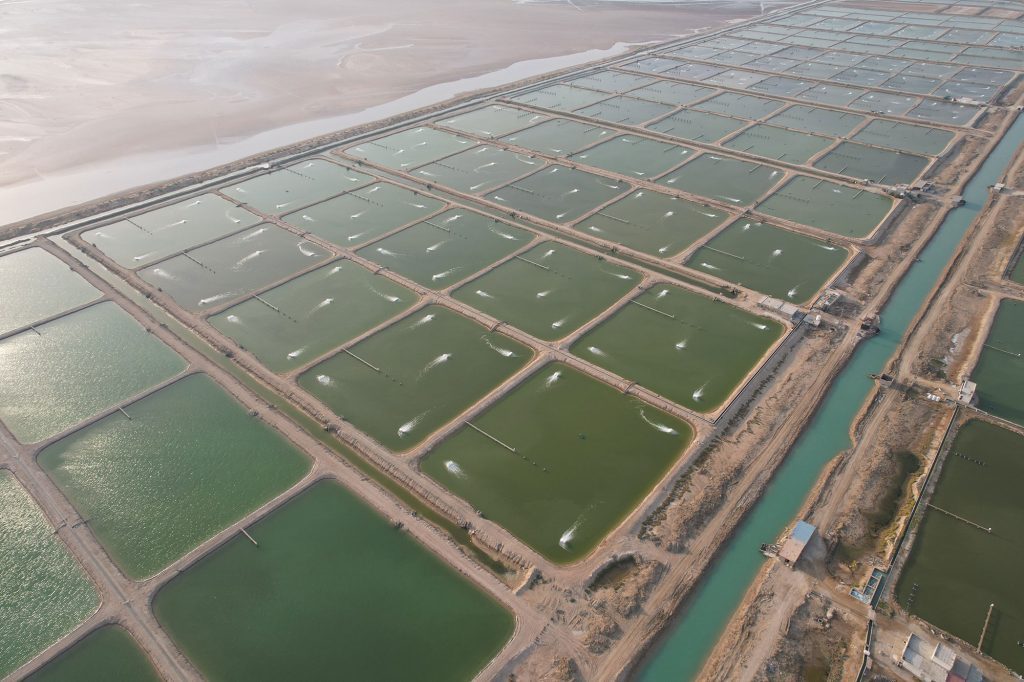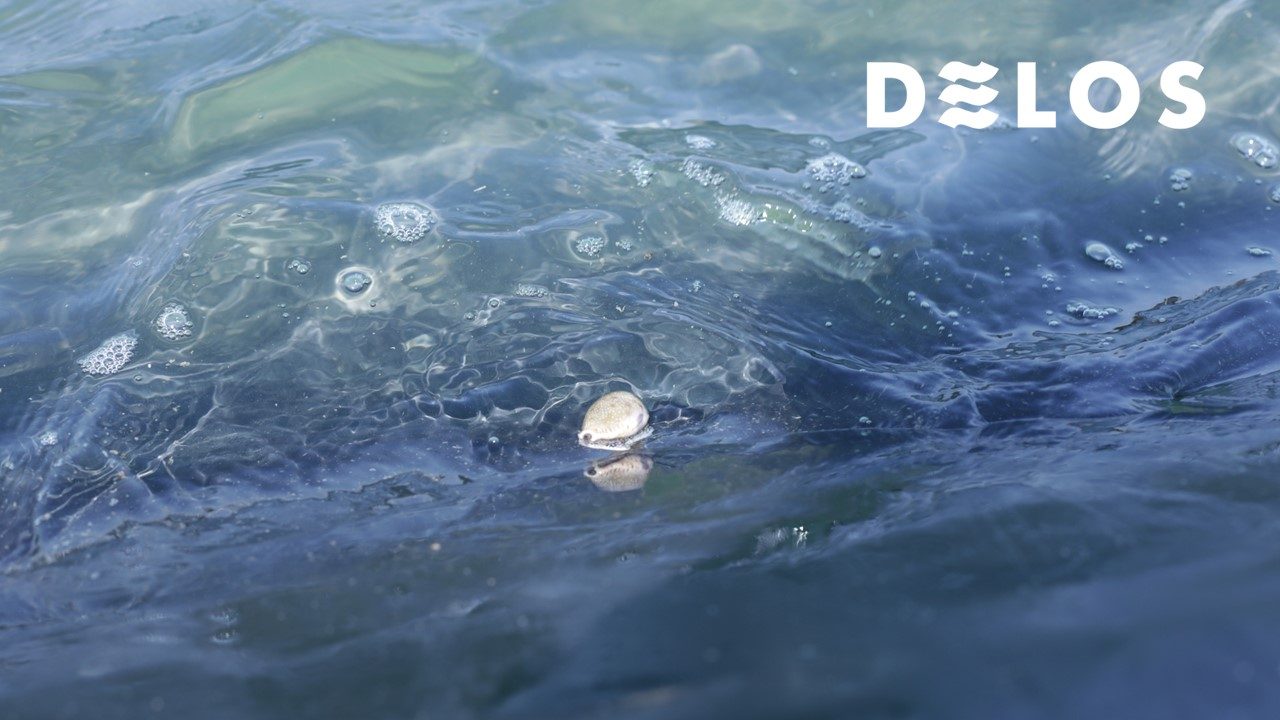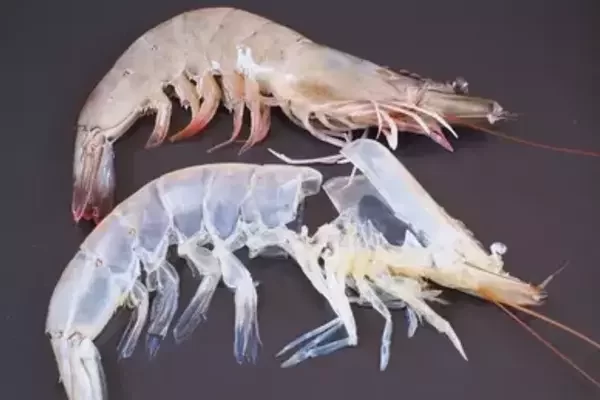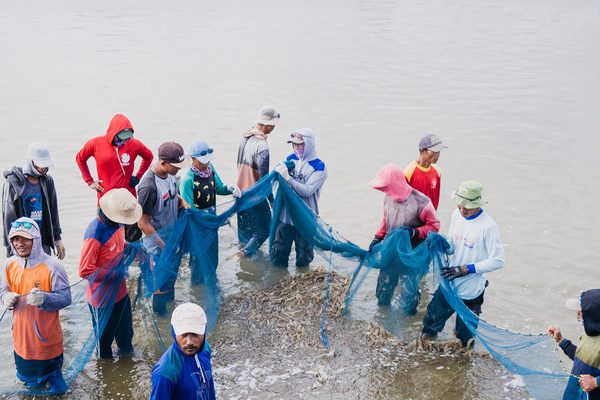Instant Health and Plankton pond-side Diagnostics Powered by AI
analyzed
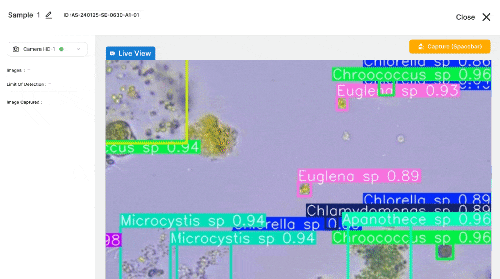
INTRODUCING!
AquaSense Diagnostic Tool
Transform your traditional shrimp farming with AquaSense.
Say goodbye to slow, manual diagnostics and unreliable results. AquaSense automates health and water quality analysis, delivering faster, accurate insights to predict, mitigate, and manage risks—empowering you to act with confidence.
Introducing AquaSense: AI Solutions for Proactive Aquaculture Management
AquaSense is here with AquaSense Plankton, for automated plankton analysis, and AquaSense Health, for comprehensive shrimp health assessments. Eliminate the slow and tedious traditional process with advanced AI technology developed by aquaculture experts–allowing you to proactively manage water quality and shrimp health, reducing risks and enhancing yields.
Our Solutions
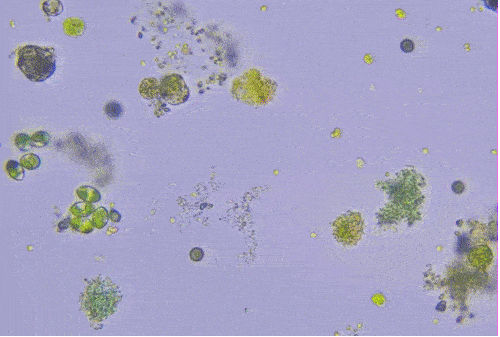
AquaSense Plankton
Precisely identify, count, and analyze plankton in your water samples. Gain actionable insights and predictive analytics to make smarter, optimized decisions for your pond health.
AquaSense Plankton
AquaSense Plankton is built to bring precision to plankton analysis. Using state-of-the-art computer vision, it can identify, count, and analyze plankton directly from water samples viewed under a microscope. This provides critical insights into the abundance and types of plankton present in your water, helping you maintain optimal water quality
How It Works
Simply place a water sample under a microscope, and AquaSense Plankton will automatically identify and categorize different types of plankton using AI. The system counts their numbers, analyzes their distribution, and generates reports, making it easier for you to track water quality over time
Benefits
- Accurate Plankton Identification: Reduce the risk of human error with automated recognition
- Time-Saving: Cut down on hours of manual counting
- Actionable Insights: Get detailed data on plankton diversity and abundance for better water quality management
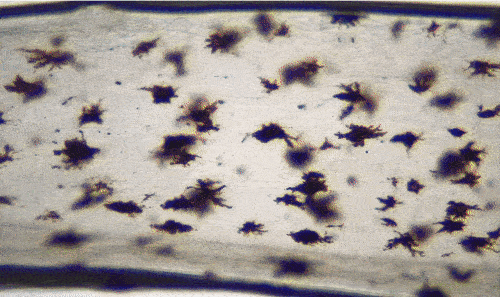
Coming Soon
AquaSense Health
The industry’s first early warning system for shrimp health. Detect stress or infection up to 20 days earlier by analyzing critical indicators like chromatophore, tubules, and white spots. Act sooner to protect your harvest and maximize yields.
AquaSense Health
AquaSense Health focuses on shrimp health, using computer vision to analyze shrimp characteristics and identify key indicators of health. It looks at parameters like chromatophore, tubulus, and the presence of white spots to give a comprehensive assessment of shrimp wellbeing
How It Works
Using images of shrimp taken under controlled conditions, AquaSense Health’s AI analyzes various indicators like chromatophore color changes, tubulus structure, and signs of white spot syndrome. The system processes this information to provide a detailed health report, helping you make informed decisions about treatments needed in your farm
Benefits
- Early Detection: Identify health issues before they become widespread
- Improved Accuracy: Minimize human subjectivity with AI-driven diagnostics
- Enhanced Decision-Making: Get clear recommendations for maintaining shrimp health and optimizing yield

Latest Product
AquaSense Plankton
AquaSense Plankton uses advanced computer vision to precisely identify, count, and analyze plankton from water samples, providing essential insights for optimal water quality
AquaSense Plankton
AquaSense Plankton is built to bring precision to plankton analysis. Using state-of-the-art computer vision, it can identify, count, and analyze plankton directly from water samples viewed under a microscope. This provides critical insights into the abundance and types of plankton present in your water, helping you maintain optimal water quality
How It Works
Simply place a water sample under a microscope, and AquaSense Plankton will automatically identify and categorize different types of plankton using AI. The system counts their numbers, analyzes their distribution, and generates reports, making it easier for you to track water quality over time
Benefits
- Accurate Plankton Identification: Reduce the risk of human error with automated recognition
- Time-Saving: Cut down on hours of manual counting
- Actionable Insights: Get detailed data on plankton diversity and abundance for better water quality management
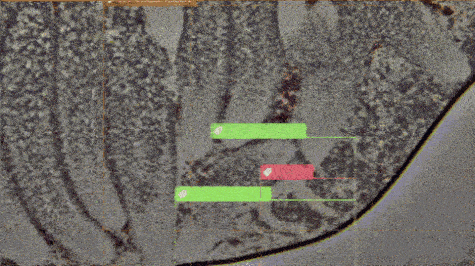
Latest Product
Annotation Research Partner
Our Annotation Research Partner service offers full support for developing computer vision models requiring extensive data annotation
Annotation Research Partner
Our Annotation Research Partner service offers comprehensive support for developing computer vision models with extensive data annotation, guiding clients through the model-building process to deliver custom algorithms tailored to specific applications, including regional adaptations
How It Works
We align on project goals, use our tools for precise data annotation, and support model development—delivering a tailored, ready-to-use computer vision model suited to specific needs, like identifying regional plankton species
Benefits
- Region-Specific Adaptability: Tailored models that meet unique environmental or regional needs, making them adaptable to diverse applications
- Scalable Data Annotation: Quickly annotate large datasets with accuracy and efficiency, supported by specialized tools and a trained team
- Expert Model-Building Assistance: Our support goes beyond annotation to include model-building guidance, ensuring a robust final product

Coming Soon
AquaSense Health
AquaSense Health uses computer vision to assess shrimp health by analyzing key indicators like chromatophore, tubulus, and white spots for a comprehensive wellbeing report
AquaSense Health
AquaSense Health focuses on shrimp health, using computer vision to analyze shrimp characteristics and identify key indicators of health. It looks at parameters like chromatophore, tubulus, and the presence of white spots to give a comprehensive assessment of shrimp wellbeing
How It Works
Using images of shrimp taken under controlled conditions, AquaSense Health’s AI analyzes various indicators like chromatophore color changes, tubulus structure, and signs of white spot syndrome. The system processes this information to provide a detailed health report, helping you make informed decisions about treatments needed in your farm
Benefits
- Early Detection: Identify health issues before they become widespread
- Improved Accuracy: Minimize human subjectivity with AI-driven diagnostics
- Enhanced Decision-Making: Get clear recommendations for maintaining shrimp health and optimizing yield
Why Use AquaSense for
Shrimp Health and Plankton Analysis

20 days early warning
For health and stress insights. Use PCR effectively, act decisively to protect and secure your harvest.
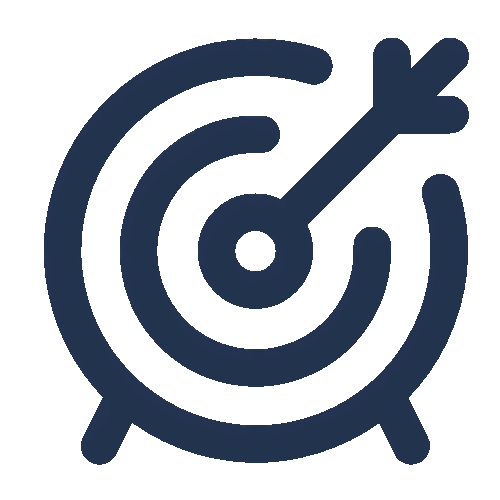
Precision Aquaculture
Move beyond guesswork. Accurate, actionable data for smarter, fast decisions. Unlock the future of farming.

30% better survival
Proven results: our farms improved SR on average 22% by acting earlier to prevent losses.
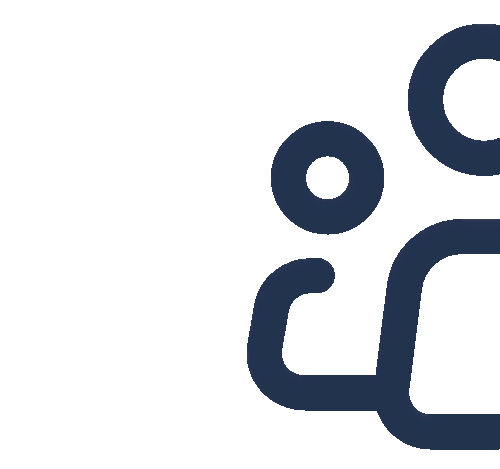
User-friendly
Plug and play: Seamless integration with your existing processes. Minimal training required. Fast and easy to share data.
Get Accurate Diagnostics in One Click with AquaSense, A Cost-Effective AI Technology.
Future Vision: What’s Next from AquaSense?
Join us to innovate smarter, AI-driven solutions
January 2025
Launch AquaSense Plankton & Deep Plankton Analytics Module
April 2025
Launch of AquaSense Health Monitoring Covering at Least Six Critical Health Parameters: Begin Disease Prediction Analysis
January 2025
Launch AquaSense Plankton & Deep Plankton Analytics Module
January 2025
Launch of AquaSense Health Monitoring Covering at Least Six Critical Health Parameters: Begin Disease Prediction Analysis
April 2025
1. AquaSense Health Launch: Monitoring with Five Critical Health Parameters
2. Disease Prediction Analysis
October 2025
Treatments and Solutions to the Problem and Opportunities Quantified by AquaSense
July 2025
Many More Plankton Genus Added and Launch of Health Diagnostics: AI-Driven Predictive Management
January 2025
Regional Pilots and Feature Expansion
March 2025
Real-Time Insights and Mobile Integration
May 2025
Predictive Analytics and Global Expansion
See How We Turn Challenges Into Innovations
Effective Strategies for Controlling Ammonia in Vannamei Shrimp Ponds
Types of Vannamei Shrimp Feeds to Make Your Shrimp Grow Faster
This is the Process of Molting in Shrimp and How to Handle It
These are 7 Tips for Successful and Profitable Vannamei Shrimp Harvest
How to Maintain the Water Quality for Vannamei Shrimp Ponds to Stay Optimal

Case Study
Improving Plankton Management and Awareness
On our DELOS farms, we struggled with vibrio spikes and nutrient increases caused by plankton crashes. These crashes created more stressful production conditions. During cycle preparation, building the microbiome and plankton population quickly and consistently has been challenging.
Improving Plankton Management and Awareness
Slow Process to Identify Plankton Problems
On our DELOS farms, we struggled with vibrio spikes and nutrient increases caused by plankton crashes. These crashes created more stressful production conditions. During cycle preparation, building the microbiome and plankton population quickly and consistently has been challenging.
Our team interprets the water colour to understand the plankton health. However, this approach varied across teams and often led to inconsistent outcomes. We found plankton crashes were common, with blue green algae often becoming a problem. Measuring only twice a week using traditional methods caused us to miss key signs of potential issues that could occur and we couldn’t link our inputs to how plankton populations were changing.
Reliable AI-powered Tool for Faster Analysis
AquaSense Plankton revolutionized the situation on our farm, allowing our team to access reliable and actionable insights immediately. The AI-powered diagnostic tool is twice more accurate than our lab teams, and delivers results in seconds. This enables any team member on our farm to analyze each pond daily in just minutes, a task that previously took 10 hours before AquaSense.
The analytics reports provide data on plankton density, community diversity, and toxicity. Alerts keep our farm teams informed of any concerning changes, so we can take immediate action.
The Result of AquaSense Plankton on Farms
- Fewer Severe Plankton Crashes: Major crashes decreased by 30% per production cycle in farms using AquaSense.
- Complete Event Detection: Daily monitoring captured 100% of critical phytoplankton changes, ensuring no threats went unnoticed.
- Increased Data Trust: Automated data eliminates human error and boosts team confidence to trust the insights. When re-testing was needed, results were ready in seconds.
- Faster Interventions: Decisions can be made within minutes instead of days, as data analysis and sharing are nearly instantaneous, enabling the team to act with a full understanding of pond conditions.
Cutting-edge Solution for Farm
AquaSense Plankton turned our pond management approach from reactive to proactive. With a continuous feedback loop, our teams make precise, informed decisions daily, significantly improving farm productivity.
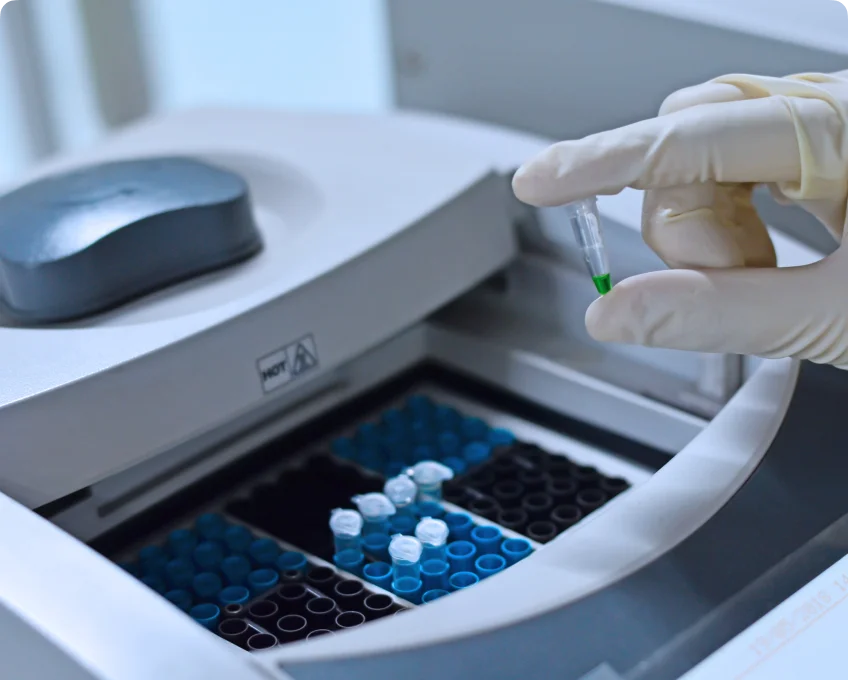
Case Study
Pathogen Detected 20 Days Early with 70% Cost Reduction in PCR Cost
We did not know our shrimp were infected until we saw feeding changes or mortality. To combat this, we adopted an intensive early detection approach using PCR testing. While this improved our ability to identify pathogens earlier and enhanced survival rates, the escalating costs became a major concern.
Pathogen Detected 20 Days Early with 70% Cost Reduction in PCR Cost
Limited Diagnose and High Cost of PCR Test
We did not know our shrimp were infected until we saw feeding changes or mortality. To combat this, we adopted an intensive early detection approach using PCR testing. While this improved our ability to identify pathogens earlier and enhanced survival rates, the escalating costs became a major concern.
Additionally, we found that most infections involved multiple pathogens, but many PCR providers were unable to diagnose all pathogens present, further complicating the process.
Daily Health Report with AI-powered Tools
AquaSense Health helped us by replacing the long time PCR checks every 20 days with daily health report on every pond, whenever the team needed it. The AI system puts clinical expertise into the hands of every team member, enabling them to make optimized decisions and focus their time and energy where they are most impactful.
The system identifies early indicators of disease, such as abnormalities in the hepatopancreas, muscle necrosis, hemocyte count to show stress levels, and gut condition. By flagging high-risk cases, AquaSense helped prioritize PCR testing to accurately diagnose the cause, up to 20 days earlier than before.
The Result of AquaSense Health on Farms
- 70% Cost Savings: We use the right PCR test at the right time, significantly improving cost efficiency.
- Improved Survival Rates: Early warning alerts our team to take proactive measures, increasing shrimp survival rate, and enabling earlier harvests.
- Instant Health Data: Continuous health monitoring provided actionable insights without delay.
Empowering Farm with AquaSense Health
AquaSense Health not only revolutionized pathogen detection but also empowered our farm team at DELOS to act earlier and smarter. With improved efficiency and significant cost savings, we’ve built a more resilient and productive farming operation.

Case Study
Plankton Monitoring Made Effective with AquaSense
At DELOS farms, the impact of treatments like probiotics, carbon or liming additives on water quality and phytoplankton balance were often unclear. The impacts were hidden by other day-to-day fluctuations and making it difficult to asses. Moreover, the traditional methods provided feedback in days or weeks, delaying decisions and ultimately reducing the performance of our farms.
Pivotal Roles of Phytoplankton Community in Aquaculture Sustainability
Phytoplankton plays significant roles in aquaculture ecosystems, primarily as a water quality conditioner, as a live food, and as a microbial community balancer. The combination of these three roles of phytoplankton can tell the health level of aquatic ecosystem. Studies have shown that phytoplankton have some significant effects on shaping beneficial microbial communities that modulates stable and good water quality profiles as well as controlling the abundance and virulence of opportunistic and/or pathogenic microorganisms.
We Monitor Phytoplankton Dynamic as a Metrics of Ecosystem Health
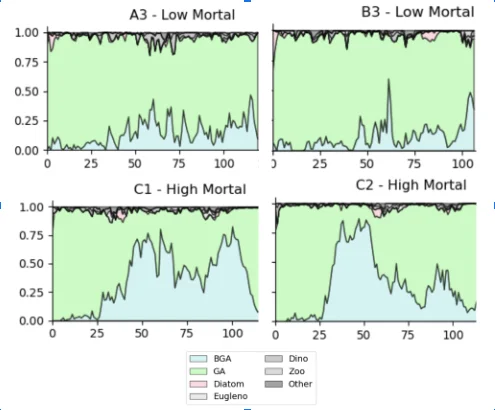
Studies have demonstrated that phytoplankton play a vital role in aquaculture, closely linked to the growth, survival, and health of cultured organisms. We monitor our shrimp ponds and see changes in phytoplankton abundance and diversity often reflect water quality issues and can lead to growth delays, mortality events, and ecosystem imbalances (Fig 1). They serve as both indicators of environmental changes and regulators of water profiles. For instance, cyanobacteria dominance signals nitrogen-phosphorus imbalances, while high phytoplankton abundance can cause oxygen fluctuations.
Beneficial groups like green algae and diatoms improve water quality, whereas harmful ones like cyanobacteria and dinoflagellates produce toxins, disrupting aquaculture stability. Community shifts in phytoplankton correlate with abiotic and biotic factors like dissolved oxygen, pH, and bacterial composition, often leading to disease outbreaks. Certain species, such as Coscinodiscus blandus, act as biomarkers for cultivation risks.
This only prove that continuous monitoring of phytoplankton is essential to ensure aquaculture sustainability, as it helps mitigate risks to organisms and product safety.
Solutions for Phytoplankton Identification Based on Direct Experience in the Field
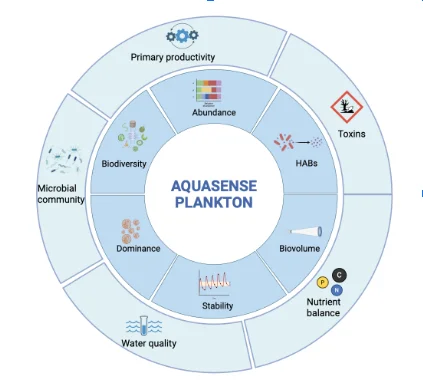
Phytoplankton identification is traditionally performed using light microscopy and morphological methods. There are also advanced techniques like DNA barcoding and metagenomic analysis. However, this method is limited by high costs and long processing times. This process requires skilled analysts and is labor-intensive, making routine monitoring challenging, particularly in aquaculture. Manual counting and classification are time-consuming, subjective, and prone to errors, with expert assessments achieving less than 75% recall and significant variability between analysts. Automating identification and counting is critical to improving the accuracy and reliability of phytoplankton monitoring.
With years of experience and development in assessing phytoplankton directly on our shrimp farm, we created a cutting edge AI technology, transforming the traditional processes into solutions in one click. Our own experience in identifying water quality drove us to help the aquaculture industry. Eliminate the hassle, long-waiting outcome that prone to errors. We have used and tested this breakthrough and proven to fasten the process of identifying water ecosystems, allowing us to take proactive steps in taking care our farms. Are you ready for the new solution for identifying your water quality? AquaSense Plankton is finally here.
Reference
Lyu, T., Yang, W., Cai, H., Wang, J., Zheng, Z. and Zhu, J., 2021. Phytoplankton community dynamics as a metrics of shrimp healthy farming under intensive cultivation. Aquaculture Reports, 21, p.100965.
Rivas-Villar, D., Rouco, J., Carballeira, R., Penedo, M.G. and Novo, J., 2021. Fully automatic detection and classification of phytoplankton specimens in digital microscopy images. Computer Methods and Programs in Biomedicine, 200, p.105923.
Yang, W., Zhu, J., Zheng, C., Lukwambe, B., Nicholaus, R., Lu, K. and Zheng, Z., 2020. Succession of phytoplankton community during intensive shrimp (Litopenaeus vannamei) cultivation and its effects on cultivation systems. Aquaculture, 520, p.734733.
Ekasari, J., Utari, H.B., Vinasyiam, A. and Mubarak, A.S., 2024. Relationship Between The Dynamics of Plankton Community Abundance, Total Organic Matter, and Salinity in Intensive Shrimp Farming Systems. Journal of Aquaculture & Fish Health, 13(2).
Be the First to Join Our Milestone and Unlock Exclusive Access to AquaSense
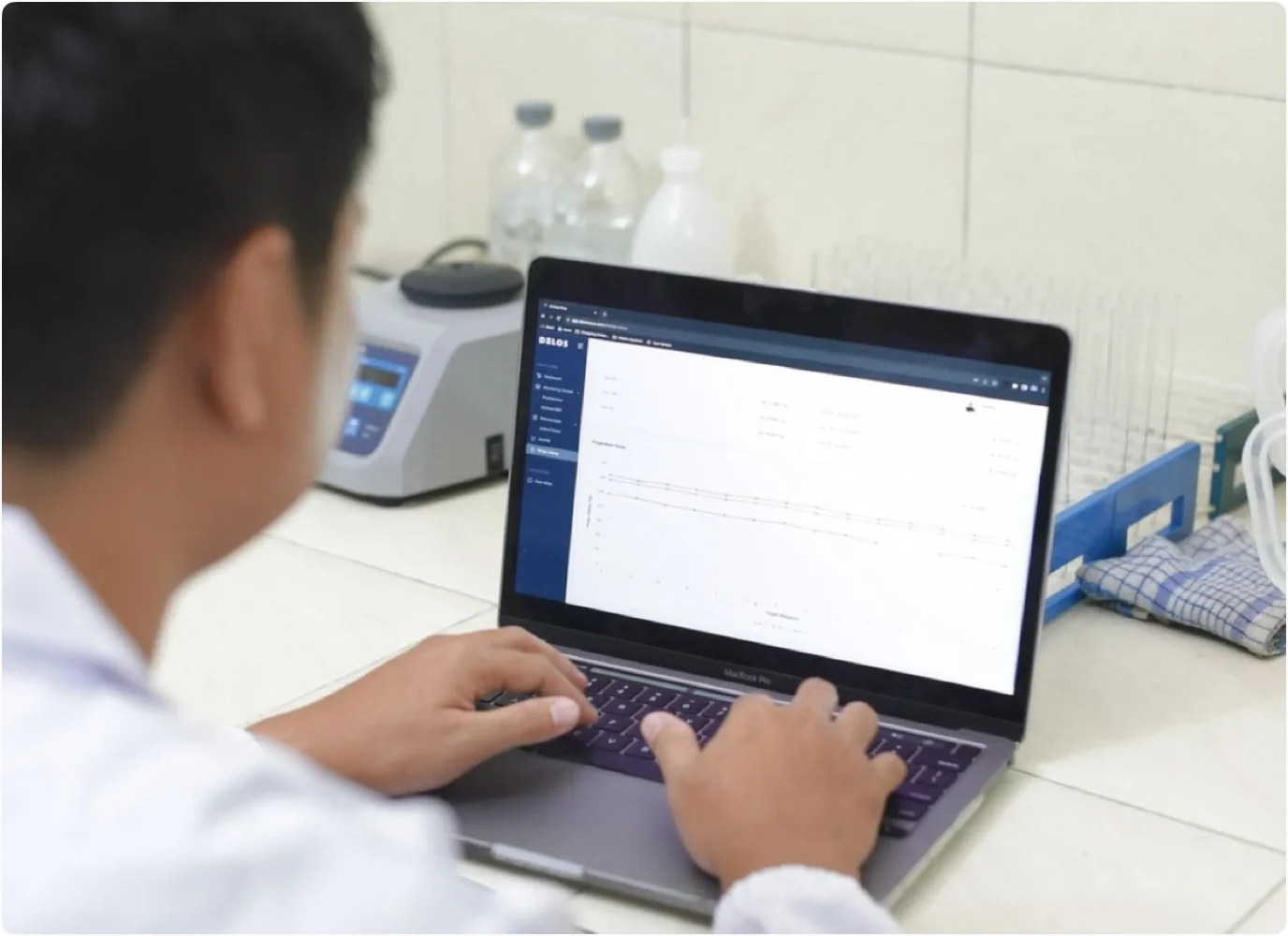
Frequently Asked Question
Aquasense-Phytoplankton is a specialized tool designed to measure and monitor plankton density and community in aquatic environments, specifically focusing on phytoplankton populations. It provides users with real-time data on plankton counts, allowing for effective monitoring of water quality and aquatic ecosystem health.
Aquasense-Phytoplankton works by collecting water samples and analyzing the plankton count and composition using Artificial Intelligence image recognition. The application processes this data and provides an accurate count of the plankton density, which can be used to evaluate the health of the aquatic ecosystem or for other scientific research purposes.
Aquasense-Phytoplankton is designed primarily to measure phytoplankton—the microscopic plants in the water. This includes a variety of different taxonomic groups including cyanobacteria, diatoms, chlorophyta (green algae), dinophyta (dinoflagellates). However, in analysis, also count some common zooplankton. It can also be used to track their density and composition in various aquatic environments.
First, you should collect the sample. After the sample is preserved using reagen preservation, you then drop the sample to a haemocytometer. The sample is observed under a microscope using 400x magnification. Then you will select the area of the grid haemocytometer and capture the image area selected. Aquasense-Phytoplankton will automatically identify and count the phytoplankton. You can download the data from the download button.
To collect a sample for analysis with Aquasense-Phytoplankton, you can use a plankton net or directly collect water from the desired area of the pond or aquatic environment. Once you have your sample, transfer it to the analysis system following the instructions in the application, and Aquasense will process the sample to determine identify the plankton composition and calculate its density
To count the plankton density, you will need to use a haemocytometer. A hemocytometer is a specialized glass slide with a precise grid pattern used to count microscopic organisms like phytoplankton. In phytoplankton analysis, it helps determine the concentration and abundance of cells in a water sample.
To prepare, first mix the phytoplankton sample thoroughly to evenly distribute the cells. Using a pipette, draw a small volume and carefully place it onto the grid area of the hemocytometer without creating bubbles. Allow any cells to settle before beginning the count.
For most phytoplankton species, a magnification of 100x–400x is appropriate. Smaller or less abundant phytoplankton may require higher magnification for accurate counting. However, for this application, you have to set a magnification 400x
For this application, you do not need to stain the phytoplankton sample. The fresh sample will help the AI model to recognize the phytoplankton accurately.
Yes, you need to preserve your sample before observation for accurate counting. Preservation will stop the plankton moving and make them distribute evenly. For preservation methods you need to read a manual book for this application.
The frequency of monitoring depends on your specific needs. For aquaculture environments, it’s recommended to monitor plankton density regularly, such as once a day or a week depending on environmental conditions. Frequent monitoring helps detect early changes in water quality that can affect aquaculture production.
After the sample is processed, Aquasense-Phytoplankton reports the plankton density in cells/mL. Higher or lower densities indicate the condition of the aquatic environment, such as nutrient imbalances. Then the nutrient imbalances will affect the community composition (diversity and dominance). This report will help users to make decisions in treating the aquatic environment. Refer to the user manual or consult a specialist for more detailed interpretation based on specific applications.
Calibration of the Aquasense-Phytoplankton device is necessary to ensure accurate results. The calibration process is usually done using known concentrations of plankton in controlled conditions. Please refer to the calibration section in the application’s user guide for detailed instructions on how to calibrate your device.
If you experience inconsistent or inaccurate results, ensure that the plankton sample is properly collected and handled. Additionally, check the calibration of the device and make sure that it’s clean and functioning properly. If issues persist, you can contact customer support or refer to troubleshooting guides in the user manual.
Aquasense-Phytoplankton allows you to export your data in various formats, such as M.excel CSV or PDF. You can save the results directly to your device or cloud storage, and easily share the data for further analysis or reporting.
Key analyses include, plankton abundance, species composition, diversity index, dominance index, biomass and biovolume estimation, nitrogen biomass potential, plankton toxicity, and temporal community changes.
Yes, Aquasense-Phytoplankton is ideal for both small-scale and large-scale aquaculture operations. It provides accurate and reliable plankton density data, helping aquaculture managers optimize water quality and plankton-based food sources for cultured species.
For technical support or inquiries, you can visit the Aquasense-Phytoplankton support page, contact customer service via email, or refer to the FAQ section and user manual within the application for troubleshooting and guidance.
